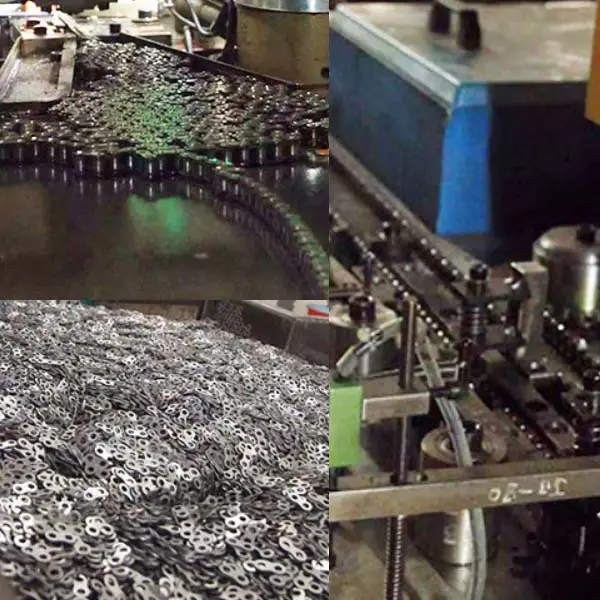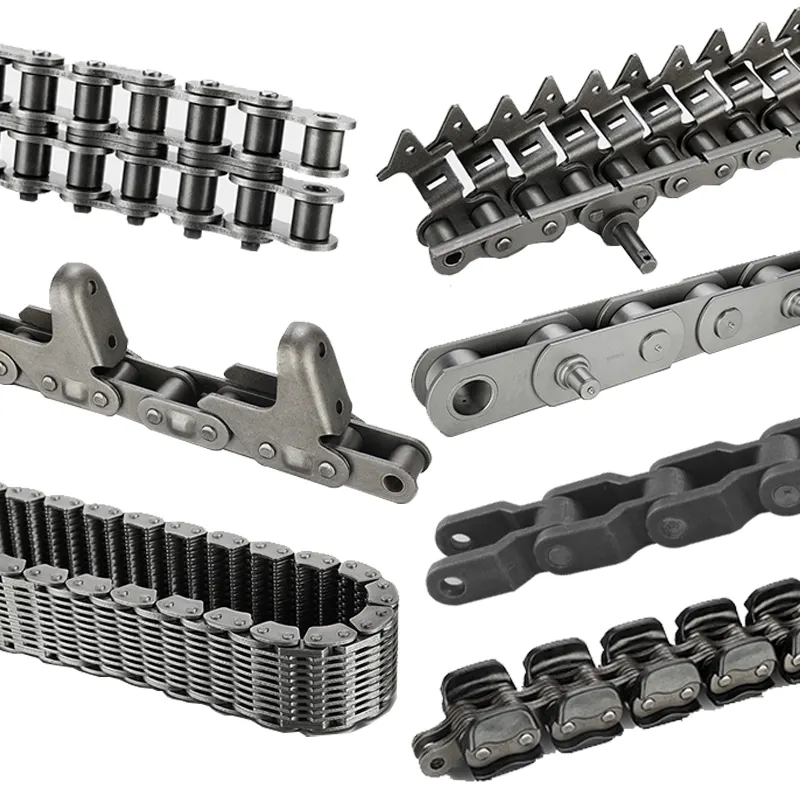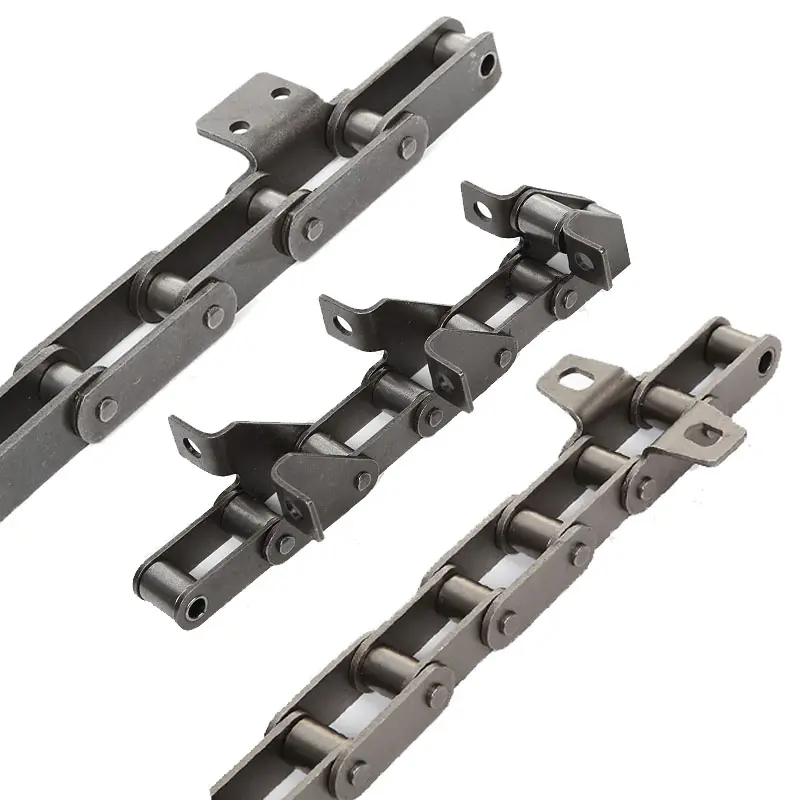Product Description
Engineering Class Chain lubricanttubular industrial transmission conveyorroller c2082h drag Conveyor engineering chain
We, EPG CHAINS, specialize in designing and manufacturing industrial chains, with over 30 years history in this industry. Our factory occupies 60,000 square meters, with investments in machineries our fixed assets CHINAMFG to 80 million RMB. We have a very energetic management team, experienced and skilled workers. The total employees rise to 180 in 2018.
With our specialty in producing chains for conveyor, transmission and dragging, our products have been exported to USA, Canada, Europe, Japan, South America, Southeast Asia, Africa, the Middle East and other countries and we have established sound connections with some key players in the related industries. In 2018, the total turnover reaches 14 million USD.
Our products have passed ISO:9001 quality management system and stand the end users’ ordeal. We devote ourselves to manufacture the high-quality products with competitive prices, we know the industries well, therefore from design to material selection, till manufacturing technique is up to the high standard, meanwhile our plHangZhou team and international team will ensure the punctual delivery.
We have strict quality control, each order has individual record and will be kept in file.
We welcome the OEM inquires and just remember we are expert in providing the solution for the chains in the industries of Sugar, Palm oil, Wood, Cement, Car, Paper, Asphalt , Food, ,Water treatment, Mining, Automation…
Also, welcome to visit our factory and you will find satisfaction…
EPG Chains hereby certify that if you found any defect in our material or technique of any kind of product,which will be free of charge;if you found any product was inconsistent with the approval drawing or sample after the delivery,we can accept the return or rework of goods and afford any charge about this.
|
Product name |
Engineering Class Conveyor Chain |
|
OEM |
Available |
|
Samples |
Available |
|
Trial Order |
Available |
|
Packing |
Can be customized |
|
Color |
Nature |
|
Certificate |
ISO9001:2015 |
|
Function |
Transmission |
|
Payment |
T/T,L/C,D/A,D/P, Western Union |
|
Treatment |
Through hardened and Case hardened and Induction hardened |
|
Material |
sidebar 40Cr Pin 40Cr or 42CrMo or SS420 Bush 20Cr or 20CrMo or SS420 Roller 40Cr or 20Cr
|
|
Standard |
DIN GB ISO JIS BA ANSI |
|
Brand |
Ever-Power or OEM |
/* January 22, 2571 19:08:37 */!function(){function s(e,r){var a,o={};try{e&&e.split(“,”).forEach(function(e,t){e&&(a=e.match(/(.*?):(.*)$/))&&1
| Usage: | Transmission Chain, Drag Chain, Conveyor Chain, Dedicated Special Chain |
|---|---|
| Material: | Alloy |
| Surface Treatment: | Heat Treatment |
| Feature: | Heat Resistant |
| Color: | Nature |
| Transport Package: | Wooden Case |
| Samples: |
US$ 9999/Piece
1 Piece(Min.Order) | |
|---|

How do engineering chains handle misalignment between sprockets?
Engineering chains are designed to handle some degree of misalignment between sprockets. Misalignment can occur due to various factors such as improper installation, wear and elongation of the chain, or inaccuracies in the machinery. While some misalignment is inevitable in many industrial applications, excessive misalignment should be avoided to ensure optimal chain performance and longevity.
Here’s how engineering chains handle misalignment:
- Flexible Construction: Engineering chains are constructed with flexible components such as pins, rollers, and bushings. This design allows the chain to adapt to minor misalignments without putting excessive stress on the chain or sprockets.
- Articulating Joints: The articulating joints in the chain allow it to articulate smoothly around the sprockets, accommodating minor misalignment during the rotation. This helps reduce wear on the chain and sprockets.
- Tolerance for Misalignment: Manufacturers provide specifications for the allowable misalignment between sprockets. Engineering chains are designed to handle a certain level of misalignment within these tolerances without significantly affecting their performance.
- Proper Installation: Correct installation of the engineering chain is crucial to minimizing misalignment issues. Ensuring proper tension, alignment, and center-to-center distance between sprockets can help reduce misalignment and prolong chain life.
- Regular Maintenance: Regular maintenance, including chain inspection and lubrication, can help identify and address misalignment issues early on. Promptly correcting misalignment can prevent further damage and ensure efficient chain operation.
- Alignment Devices: In some cases, alignment devices or tools may be used during installation to ensure accurate alignment between the sprockets. These devices can help improve chain performance and reduce wear caused by misalignment.
It is essential to follow the manufacturer’s guidelines for chain installation, maintenance, and alignment to optimize the performance and service life of engineering chains. Addressing misalignment issues promptly and keeping the chain in proper working condition will contribute to the overall reliability and efficiency of the machinery or equipment in which the chain is used.

Can engineering chains be used in vertical lifting applications?
Yes, engineering chains can be used in vertical lifting applications, and they are commonly employed in various industries for this purpose. Vertical lifting applications require a reliable and robust power transmission solution, and engineering chains are well-suited to meet these demands.
1. High Load Capacity: Engineering chains are designed to handle heavy loads, making them suitable for vertical lifting applications where substantial weights need to be lifted and moved.
2. Safety Features: Many engineering chains used in lifting applications are designed with safety features, such as chain guides or guards, to prevent the chain from derailing or jumping off the sprockets during operation.
3. Controlled Motion: Engineering chains offer precise control over the lifting motion, which is crucial for vertical lifting tasks that require accuracy and stability.
4. Reliability: In vertical lifting applications, the chain must operate consistently and reliably to ensure the safety of workers and equipment. Engineering chains are known for their durability and long service life, making them a dependable choice for such critical tasks.
5. Customization: Engineering chains can be customized to fit specific vertical lifting applications. Different chain types, sizes, and attachments can be chosen to optimize performance and efficiency for a particular lifting task.
6. Lubrication: Proper lubrication is essential for engineering chains used in vertical lifting applications to minimize friction and wear, ensuring smooth and efficient operation.
7. Compliance: Depending on the industry and application, engineering chains may need to comply with specific safety standards and regulations, such as ISO or ANSI standards.
Overall, engineering chains are a reliable and versatile option for vertical lifting applications, providing the necessary strength, control, and safety required for lifting heavy loads with precision and efficiency.

How do engineering chains handle shock loads and impact forces?
Engineering chains are designed to handle a range of loads, including shock loads and impact forces, encountered in various industrial applications. Their ability to withstand these forces depends on several factors:
1. Material Selection: High-quality engineering chains are often made from robust materials such as alloy steel or stainless steel. These materials provide excellent strength and durability, allowing the chain to handle shock loads without permanent deformation or failure.
2. Chain Design: The design of engineering chains plays a crucial role in their ability to handle shock loads. The chain’s structure, such as the shape and size of its components, determines its load-bearing capacity and resistance to impact forces.
3. Heat Treatment: Some engineering chains undergo specific heat treatment processes to enhance their hardness and toughness. Heat-treated chains can better withstand shock loads and impact forces, making them suitable for demanding applications.
4. Fatigue Resistance: Engineering chains are designed to have good fatigue resistance, which means they can endure repeated loading cycles without failure. This property is essential for withstanding impact forces that occur intermittently in certain applications.
5. Proper Installation and Tensioning: Correct installation and appropriate tensioning of the chain are essential to ensure optimal performance under shock loads. Improper tensioning may lead to excessive stress on the chain and premature failure.
6. Chain Speed: The speed at which the chain operates can influence its ability to handle shock loads. High-speed operation may generate additional forces, so the chain must be rated to withstand these forces without exceeding its limits.
7. Regular Maintenance: Proper maintenance is crucial for extending the life of engineering chains subjected to shock loads and impact forces. Regular inspections, lubrication, and replacement of worn components are essential to keep the chain in optimal condition.
Overall, engineering chains are engineered to handle shock loads and impact forces in industrial environments. However, it is crucial to choose the right chain type, size, and material for the specific application and to follow proper installation and maintenance practices to ensure reliable and safe operation under varying load conditions.


editor by CX 2024-04-04
by
Tags:
Leave a Reply